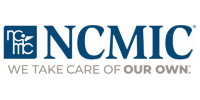With a focus on looking ahead to chiropractic’s future role in the evolving health care system, this year’s Association of Chiropractic Colleges Educational Conference and Research Agenda Conference (ACC- RAC) was held at Caesar’s Palace in Las Vegas, March 17 to 20, and attracted a record number of participants. ACC president, Frank J. Nicchi, DC, was pleased with the event: “I feel like we accomplished a great deal this year, attendance was robust and important issues in chiropractic education were addressed. I should also add that the papers, posters and panel discussions presented at the conference were outstanding.”
The conference’s theme, Chiropractic and Public Health in the 21st Century, was advanced by keynote speakers, best-selling author, Nortin M. Hadler, MD, who discussed the personal, social and policy consequences of low back pain in a thought provoking presentation and Georges C. Benjamin, MD, executive director of the American Public Health Association, who spoke to the challenges and opportunities associated with improving population health and providers’ roles in reaching society’s goals. The resoundingly successful conference that included 200 scientific papers submitted for peer review from which 66 were selected for poster presentation and 92 for platform presentation concluded with a lively panel discussion, Subluxation Theory as a Component of Public Health.
During the business meeting, the ACC presidents’ group deliberated on a number of issues including the implementation of action steps related to several strategic directives developed at a July 2009 board retreat. Among those strategic directives are: to achieve consensus among member institutions as to how the chiropractic academic community may contribute to integration within the existing and emerging health care systems; promote collaboration in research efforts among member institutions; increase the quantity, quality and diversity of applicants pursuing chiropractic education; review the ACC Paradigm from an educational perspective; develop relationships with other chiropractic and allied health institutions globally that complement ACC’s mission, vision and values and to look at the possibility of developing clinical residencies as part of the doctor of chiropractic program training. Additionally, ACC working groups , consisting of the chief academic officers, chief financial officers, directors of clinic, development, institutional assessment, research, libraries, admissions and postgraduate education, met to discuss common challenges facing member institutions.
The ACC-RAC planning committee was chaired by ACC vice-president Fabrizio Mancini, D.C. and included Richard Brassard, D.C. (ACC secretary-treasurer), Cheryl Hawk, D.C., Ph.D., Claire Johnson, D.C., William Meeker, D.C., David O’Bryon (ACC executive director), Robyn Patkus and Rodger Tepe, Ph.D. Dr. Claire Johnson, Peer Review Chair for the scientific platform and poster sessions for the ACC-RAC conference said, “The 2010 program had the largest turn out of chiropractic research in the history of the conference and remains the premiere scientific venue for which all forms of chiropractic research are presented – which is essential to the future development of the chiropractic profession.”
Event sponsors included renowned maker of whole food nutritional supplements premier sponsor Standard Process, Inc., and platinum sponsors Foot Levelers and NCMIC. Next year’s conference, themed integration, will also be held at Caesar’s Palace. For more information, please visit www.chirocolleges.org.




